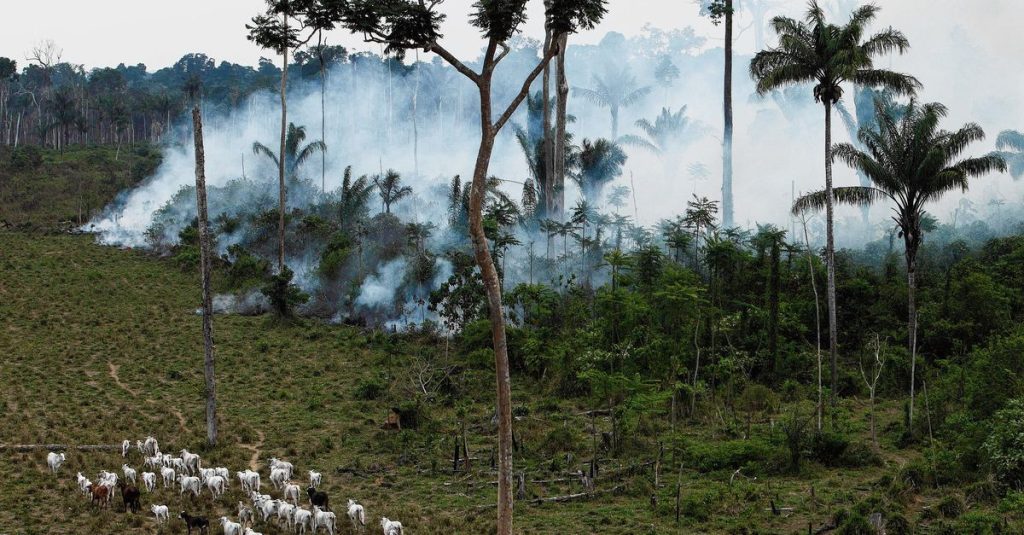Policymakers and scientists use two different methods to calculate the amount of carbon dioxide2 They are emitted by a country, sometimes making it unclear how much that country must reduce its emissions to prevent dangerous climate change.
That’s why a team of international scientists created a model to compare the numbers of these different methods. Researchers Describe their model In the trade magazine nature. This allowed them to calculate the difference in how quickly countries could reduce CO2 in the future2Emissions were reduced sufficiently under different scenarios.
To prevent dangerous climate change, many countries have pledged to reduce carbon dioxide2reduce emissions to zero, Net zero. This is essential to achieving the 2015 Paris goals. There, countries agreed to keep the rate of global warming well below 2°C compared to pre-industrial levels, preferably below 1.5°C. With every bit of warming, the risk of heatwaves, wildfires and floods increases.
Land use
Net zero This does not mean that countries have no carbon dioxide at all2 They are allowed to issue more; There is scope to offset emissions, for example, by planting trees that reduce carbon dioxide emissions2 Register again. As long as total emissions are below the zero line. To achieve this, countries calculate the amount of carbon dioxide each year2 Emitted and the extent of reabsorption. A kind of critical book.
Scientists and policymakers use different methods to reduce carbon dioxide2It has been known for some time to track emissions from countries. It is not that one way is right and the other is not; They are different because scientists work with models, while policymakers evaluate the real world. The Intergovernmental Panel on Climate Change (IPCC), the United Nations’ scientific climate agency, has been trying to develop a global measurement method for some time.
The difference lies mainly in carbon dioxide calculations2-Emissions associated with changes in land use, for example cutting down or planting forests or draining peat soil. “Scientists at the IPCC only look at human-induced change on Earth through their models,” says climate scientist Ronald Höttjes of Wageningen University. He is not participating in the study. “The forest receives more carbon dioxide2 Because people planted trees there? Then, according to the Intergovernmental Panel on Climate Change, it may be included in the accounting. If new forests grow in Siberia due to global warming, no country may deduct this from its emissions. This is not an effort by any country to reduce carbon dioxide2In order to reduce emissions.”
On the political side, the United Nations climate agency under the United Nations Framework Convention on Climate Change, it is difficult to make this distinction. Policymakers want to know how much carbon dioxide2 It is recorded. This is calculated, for example, using satellites that see the size of the forest in a managed area, or count trees. It is not clear which part of the growth is due to human effort and which part is due, for example, to increased carbon dioxide2Concentrations. Trees have carbon dioxide2 necessary for growth.
Five years faster
The researchers compared how countries will be in the coming decades Net zero It will be achieved according to the measurement method of the United Nations Framework Convention on Climate Change and according to the models of the Intergovernmental Panel on Climate Change. “For this we used a simple existing climate model,” says the study’s lead author, Matthew Geden of the Austrian institute IIASA. “We’ve done thousands Runs Where we looked at how climate changed and how forests, for example, responded to that.
What happened? “We’ve seen the world change as fast as five years Net zero It can be achieved according to the UNFCCC method compared to the scientific method of the Intergovernmental Panel on Climate Change. So countries are more likely to say that Net zero has been achieved, whereas this is not the case according to the more stringent IPCC.
Hötjes: “This shows once again how important it is to take differences in measurement methods into account. The way you use CO2 Absorption or emissions are mainly important for forest-covered countries such as Canada. In the Netherlands, changes in forests do not exceed the amount of carbon dioxide2 Emitted from the combustion of fossil fuels.

“Coffee buff. Twitter fanatic. Tv practitioner. Social media advocate. Pop culture ninja.”











More Stories
Which can cause an increase in nitrogen.
The Central State Real Estate Agency has no additional space to accommodate Ukrainians.
The oystercatcher, the “unlucky national bird,” is increasingly breeding on rooftops.